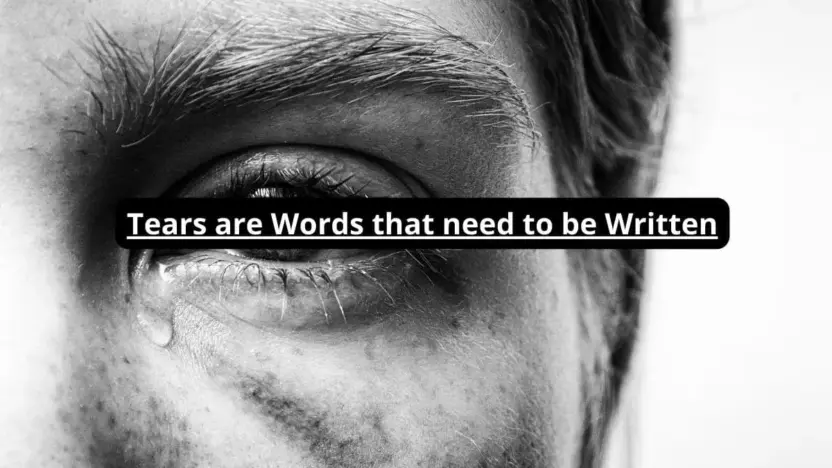In our journey through life, we often encounter moments that are too profound for words, where language falls short, and emotions take over. These moments are often accompanied by tears – a powerful expression of our inner world. The quote “Tears are words that need to be written” poignantly captures the essence of these moments. In this blog, we will explore the depth of this quote and unravel the language of emotions that tears represent.
The Power of Tears
Tears are a universal language, understood by all, regardless of culture or background. They are a raw, unfiltered expression of our innermost feelings. Tears have the power to convey a range of emotions, from joy and relief to sadness and despair.
Form of communication
Tears are often an involuntary response to a situation or emotion. They can be a way of communicating with others, conveying our emotional state when words fail us. Tears can also be a means of seeking comfort and support, as they often prompt a compassionate response from those around us.
Healing mechanism
Tears also have a therapeutic effect, helping us process and release emotions. Crying can be a form of emotional catharsis, providing relief and clarity. Research has also shown that tears contain stress hormones, and crying can help to reduce stress levels.
The Language of Tears
Tears are a complex language that speaks to the depths of our emotional world. They can express a range of emotions and experiences, each with its own unique story to tell.
Tears of joy
Tears of joy are often shed during moments of overwhelming happiness, such as weddings, births, and other milestones. These tears represent the pinnacle of human emotion and the profound impact that positive experiences can have on our lives.
Tears of sadness
Tears of sadness are perhaps the most common form of crying, experienced during times of loss, grief, or heartache. These tears are a testament to the depth of our emotional connections and the pain that can arise when these connections are severed.
Tears of frustration
Tears of frustration can occur when we feel overwhelmed or helpless in a situation. They represent the clash between our expectations and reality and the emotional turmoil that can arise when things don’t go as planned.

Writing Our Tears
The quote “Tears are words that need to be written” encourages us to explore and understand our emotions, rather than suppress them. By writing about our tears and the experiences that prompted them, we can gain insight into our emotional world and begin the process of healing.
Journaling as a tool for emotional exploration
Journaling is a powerful tool for exploring our emotions and gaining clarity. By writing about our experiences and the emotions they evoke, we can begin to understand the language of our tears and process the events that prompted them.
The role of creativity in expressing emotions
Creative expression, such as art, music, and poetry, can also be a way of giving voice to our tears. Through these mediums, we can explore and express our emotions in a way that may be difficult to do with words alone.
Sharing our stories
Sharing our stories with others, whether through writing or speaking, can also be a powerful way of processing our emotions. By opening up about our experiences, we can connect with others who have gone through similar situations, creating a sense of community and support.
Conclusion
Tears are a powerful expression of our emotional world, representing the depth and complexity of our human experience. By writing about our tears and the experiences that prompted them, we can gain insight into our emotions and begin the process of healing. The quote “Tears are words that need to be written” reminds us that our emotions are valid and deserve to be explored and understood. In doing so, we can embrace the full spectrum of our humanity and find solace in the shared experience of emotion.
Also Read: “If you look at what you have in life, you’ll always have more. If you look at what you don’t have in life, you’ll never have enough”



